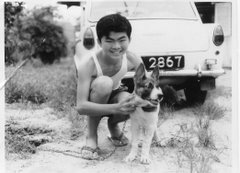Photo 1-1: Kg Bharu railway-yard (c 1959).
In the early 1960s I accompanied my mother to the St Theresa Church. Whilst my mother found quiet solitude in the church, I decided there was another better place for me at the Kg. Bharu road bridge. I watched the “chu-chu trains” come and go under the road-bridge. Some were very long, some very short in reference to the number of coaches or good-wagons pulled by a locomotive. There were some occasions when my cousins and I walked from Eng Hoon Street in Tiong Bharu Estate to Kg. Bahru Road to see the trains. You could sense that I was the “Indian Chief” leading his braves on this adventure trip. We took a short-cut through the football pitch of the Singapore General Hospital, near the Macalister Flats. I believe the football pitch has one-half still on the grounds of the hospital but the other half is now the CTE.
Photo 1-2: Kg Bharu railway-yard (c 2011).
In those days, there was no such thing called “tight security” at the railway-yard. You walk into the railway-yard from several points; Blair Road, main Kg. Bharu Road (near a Chinese shrine and the B03 bus stop), Spooner Road or the laterite track on the side of Silat Walk.Photo 2: FMSR staff quarters. Near the Kg. Bharu road-bridge, still standing is now Block 23 at Silak Walk [top right corner]. Take note of the original site of the turn-table (c 1959).
A reason for a clear-head memory on the exact spot where we slipped into the railway-yard in 1960 was because it was where I answered Nature’s call. Funny though how memories and history can repeat themselves even till today; on my July 2011 visit, I answered Nature’s call on the very same spot.Walking around the railway-yard we saw the locomotive/carriage sheds and several housing blocks.
In the railway-yard, we found the coach livery painted in dual colours - the top was beige and bottom was brown - with the familiar “Harimau” (tiger) corporate logo of Malayan Railway. However we did not see workers working because it was past 5 pm.
Some housing blocks looked neat with private gardens on the ground floor and tall chimneys. They were occupied by Malay families. Housing blocks nearer to Blair Road were occupied by male Indian collies.
The Federated Malay States Railway (FMSR) management built the 2 and 3-storey housing blocks for the staff. Each building was unique because it had the name of the different states of Malaya. The buildings were later demolished around 1983. Replacing the housing blocks are now the empty concrete ground facing Godown # 2, Godown #2 facing Spooner Road, and the HDB-designed Blocks 1 & 2.
Photo 3: The SLA signboard was where I pee in 1960; behind me would have been the FMS staff quarters. I pointed into a small drain which still exists. The former FMS staff quarters has given way to one side of the Kg. Bharu Road dual-carriageway, with the ground-level substantially raised.
Photo 4: United Engineers Ltd Steel foundry with St. Theresa’s Church in the background (c 1959). Photo courtesy from the late Brian Raybould.
The workshops and carriage/locomotive sheds at Kg. Bharu date back to 1932. So are the signal cabins, turn-table, a green coloured wooden house and the two red brick bungalows. Will these buildings be retained to capture the aura of a former railway station? Will they have to go because the future concept plan calls for an optimum mix of prime office space and high-end hotel rooms that can synergise with the commercial, convention and hotel clusters at the future Tanjong Pagar waterfront?


















